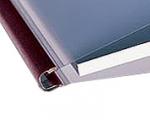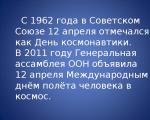Placing round transport containers on pallets
Validity period from 01.01.89
until 01/01/99
This standard applies to rectangular and round containers and establishes for them unified system sizes based on module 600´ 400 mm taking into account the nominal dimensions of pallets 1200´ 1000 mm and 1200 ´ 800 mm.
The standard should be applied when designing and purchasing import containers, equipment related to container sizes, packaging equipment, transport and storage equipment.
The standard does not apply to packaging for which, depending on special conditions and a feasibility study determined other sizes.
Amendment (IUS 11-89).
1. GENERAL PROVISIONS
1.1. The dimensions of transport and consumer packaging must be linked to each other and to the dimensions of packaging equipment, transport and storage equipment.
1.2. Container sizes produced from module 600´ 400 mm and ensuring complete filling of the pallet area 1200´ 1000 and 1200 ´ 800 mm are preferred.
2. DIMENSIONS OF SHIPPING PACKAGING
2.1. The combinations of length and width of rectangular transport containers must correspond to those indicated in the table.
If it is impossible or impractical to use the dimensions of the main row, combinations of the length and width of the transport container are selected from an additional row of sizes.
Dimensions, mm
|
Outer size (maximum) |
Placement on pallet 1200 ´ 1000 |
Placement on pallet 1200 ´ 800 |
|||||
|
Layout number |
Pallet area utilization, % |
Layout number |
Use of pallet area, % |
||||
|
Main range of sizes |
|||||||
|
Additional range of sizes |
|||||||
Note. Underlined size combinations are preferred.
2.2. The outer diameters of round transport containers are selected from the following range of sizes, mm:
1200, 1000, 800, 620, 600, 550, 500, 484, 435, 400, 370, 351, 320 , 294, 277, 266, 246, 226 , 219 , 200
2.3. The internal dimensions of the transport container are established based on the thickness of its walls and taking into account the amount of deformation during transportation and storage of products. For example, vibration during transportation, pressure on boxes in a stack, etc.
2.4. When choosing the height of a transport container, one should proceed from the basic principles: minimum consumption of container material and taking into account package transportation of goods (package height).
1200, 1150, 1100, 1050, 1000, 950 900, 850, 800, 775, 720 675, 620, 600, 560, 500, 465, 400, 360, 333, 320, 300, 280, 266, 250, 240.
2.5. Deviations from container sizes are established in standards for specific types containers.
2.6. Schemes for placing transport containers on pallets are given in appendices.
3. DIMENSIONS OF CONSUMER PACKAGING
3.1. The procedure for calculating the sizes of consumer packaging, as well as selecting transport packaging for consumer packaging or products of given sizes, is given in the appendix.
APPENDIX 1
PLACEMENT OF ROWS OF RECTANGULAR SHIPPING CONTAINERS ON PALLETS

1. Designations:
(I) - pallet size 1200 ´ 1000 mm;
(II) - pallet size 1200 ´ 800 mm.
2. A row of containers in a stack is placed in height with each next layer rotated 180°.













APPENDIX 2
PLACEMENT OF ROUND SHIPPING CONTAINERS ON PALLETS
Dimensions, mm
|
Outer diameter of container |
Number of containers in one row on a pallet |
Layout of containers on a pallet in (plan) |
||||||||
|
1200´ 1000 |
1200´ 800 |
1200´ 1000 |
1200´ 800 |
|||||||
|
at h no more than 1000 |
||||||||||
|
» h» » 800 |
||||||||||
|
at h no more than 1200 |
Horizontal |
|||||||||
|
» h» » 600 |
||||||||||
|
at h no more than 1200 |
Horizontal |
Horizontal |
||||||||
|
» h» » 600 |
||||||||||
|
|
||||||||||
|
|
||||||||||
|
|
||||||||||
|
|
||||||||||
|
|
||||||||||
|
|
||||||||||
|
|
|
|||||||||
|
|
||||||||||
|
|
||||||||||
|
|
||||||||||
|
|
|
|||||||||
|
|
|
|||||||||
APPENDIX 3
PROCEDURE FOR CALCULATING CONTAINER SIZES
1. The external dimensions of consumer packaging must be linked to the internal dimensions of transport packaging, taking into account the requirements for the quantity (weight) of products and the layout of consumer packaging in transport packaging.
2. When determining the dimensions of consumer packaging, the main ones are its theoretical outer dimensions.
The theoretical external dimensions of consumer packaging include its internal size, wall thickness and their deformation after filling the container, dimensions of component parts and clearances required for placing consumer packaging in a transfer container.
3. Theoretical external dimensions of consumer packaging (l) is calculated using the formula
l = (1)
Where A- internal size of the transport container for the calculated size of the consumer container in length, width, height, mm;
TO
4. Internal dimensions (L) consumer packaging length, width, height, diameter are calculated using the formula
L= l- (Dl+ b+ + )(2)
Where l- theoretical outer dimensions of the container in length, width, height and diameter, mm;
Dl - the total amount of deformation along the length, width, height and diameter of the filled container, mm;
b - the total thickness of the two walls of the container, taking into account structural parts that increase its overall dimensions (sides, handles, etc.), mm;
c - the amount of clearance required for manual or mechanized placement of a container block in a box, mm;
f- total thickness of components (partitions, gaskets, etc.), mm;
k - the number of units of consumer packaging in a row for one internal size of transport packaging.
Quantities Dl And c determined experimentally by experimental installations.
5. If it is necessary to determine (select) the dimensions of transport packaging according to the established consumer parameters - (in mm) the theoretical dimensions of consumer packaging are calculated using the formula:
l= L+ Dl+ b+ + (3)
5.1. After determining the theoretical length, width and height of consumer packaging, the number of its units is determined (N) in a transport container according to the formula
N = (4)
Where M - weight of cargo in a unit of transport container, kg;
T- gross weight of the product (goods) in a unit of consumer packaging or weight of the product when packaged without consumer packaging, kg;
Tb - weight of components and auxiliary packaging materials per unit of transport container, kg.
Magnitude M is determined depending on the consumer’s requirements, methods of handling shipping containers, requirements for product safety and other factors. If manual labor is required during loading and unloading and transport and storage operations, then it is necessary to take into account the restrictions on the norms for carrying goods established by government documents.
5.2. For the purpose of selecting transport containers optimal sizes Various options for placing consumer packaging (products) into transport packaging are analyzed.
If it is necessary to analyze a large number of options, it is advisable to carry out the work using electronic computers.
5.3. Internal dimensions of transport containers (A) calculated (in mm) using the formula
A = l∙ k
5.4. The external dimensions of the transport container are determined taking into account the thickness of the container material and the design of the container. In this case, the calculated dimensions of the transport container are increased to the nearest size given in the table, provided that the safety of the product is ensured.
6. If necessary, an experimental verification of the obtained dimensions of consumer and transport packaging is carried out.
INFORMATION DATA
1. DEVELOPED AND INTRODUCED by the USSR State Committee for Material and Technical Supply
PERFORMERS:
V. A. Danilevsky, Ph.D. tech. Sciences, G. M. Rudin, K. I. Ionova, I. V. Britova, N. I. Koroleva, L. V. Ushnurtseva, L. G. Katana
2. APPROVED AND ENTERED INTO EFFECT by Resolution of the USSR State Committee for Standards dated September 29, 1988 No. 3317
3. The standard fully complies with ST SEV 227-87.
4. The standard complies with MS ISO 3384 and MS ISO 3696.
5. INSTEAD GOST 21140-75.
6. The date of the first inspection is 1997.
The inspection frequency is 5 years.
GOST 21140-88
Tara. Sizing system
Group D02
INTERSTATE STANDARD
CONTAINER
Sizing system
Package. System of dimensions
Date of introduction 1989-01-01
INFORMATION DATA
1. DEVELOPED AND INTRODUCED by the USSR State Committee for Material and Technical Supply
DEVELOPERS
V.A.Danilevsky, Ph.D. tech. Sciences, G.M.Rudin, K.I.Ionova, I.V.Britova, N.I.Koroleva, L.V.Ushnurtseva, L.G.Katana
2. APPROVED AND ENTERED INTO EFFECT by Resolution of the USSR State Committee for Standards dated September 29, 1988 N 3317
3. The standard fully complies with ST SEV 227-87
4. Standard meets international standards ISO 3384-91 and ISO 3696-87
5. INSTEAD GOST 21140-75
6. The validity period was lifted according to Protocol N 7-95 of the Interstate Council for Standardization, Metrology and Certification (IUS 11-95)
7. REISSUE
This standard applies to rectangular and round containers and establishes a unified size system for them based on a module of 600x400 mm, taking into account the nominal dimensions of pallets 1200x1000 mm and 1200x800 mm.
The standard should be applied when designing and purchasing import containers, equipment related to container sizes, packaging equipment, transport and storage equipment.
The standard does not apply to containers for which other sizes have been determined depending on special conditions and a feasibility study.
1. GENERAL PROVISIONS
1.1. The dimensions of transport and consumer packaging must be linked to each other and to the dimensions of packaging equipment, transport and storage equipment.
1.2. Container sizes produced from a 600x400 mm module and ensuring complete filling of the area of 1200x1000 and 1200x800 mm pallets are preferred.
2. DIMENSIONS OF SHIPPING PACKAGING
2.1. The combinations of length and width of rectangular transport containers must correspond to those indicated in the table.
If it is impossible or impractical to use the dimensions of the main row, combinations of the length and width of the transport container are selected from an additional row of sizes.
Note: Underlined size combinations are preferred.
2.2. The outer diameters of round transport containers are selected from the following range of sizes, mm:
1200, 1000, 800, 620, 600, 550, 500, 484, 435, 400, 370, 351, 320, 294, 277, 266, 246, 226, 219, 200.
2.3. The internal dimensions of the transport container are established based on the thickness of its walls and taking into account the amount of deformation during transportation and storage of products. For example, vibration during transportation, pressure on boxes in a stack, etc.
2.4. When choosing the height of a transport container, one should proceed from the basic principles: minimum consumption of container material and taking into account package transportation of goods (package height).
1200, 1150, 1100, 1050, 1000, 950, 900, 850, 800, 775, 720, 675, 620, 600, 560, 500, 465, 400, 360, 333, 320, 300, 280, 266, 250, 240.
2.5. Deviations from container sizes are established in the standards for specific types of containers.
2.6. Schemes for placing transport containers on pallets are given in Appendices 1, 2.
3. DIMENSIONS OF CONSUMER PACKAGING
3.1. The procedure for calculating the sizes of consumer packaging, as well as selecting transport packaging for consumer packaging or products of given sizes is given in Appendix 3.
Main range of sizes Dimensions, mm
Placement on a pallet1200x800 |
|||||
Layout number | Layout number | Pallet area utilization, % |
|||
Additional range of sizes Dimensions, mm
Outer size (maximum) | Placement on a pallet 1200x1000 | Placement on a pallet1200x800 |
|||
Layout number | Pallet area utilization, % | Layout number | Pallet area utilization, % |
||
PLACEMENT OF ROWS OF RECTANGULAR SHIPPING CONTAINERS ON PALLETS
1. Designations:
(I) - pallet measuring 1200x1000 mm;
(II) - pallet measuring 1200x800 mm.
2. A row of containers in a stack is placed in height with each next layer rotated 180°.
PLACEMENT OF ROUND SHIPPING CONTAINERS ON PALLETS
Dimensions, mm
Outer diameter of container | Number of containers in one row on a pallet | Layout of containers on a pallet (in plan) |
||
if not more than 1000 | Horizontal | |||
not more than 1200 | Horizontal | |||
with hnot more than 1200 | Horizontal | Horizontal |
||
PROCEDURE FOR CALCULATING CONTAINER SIZES
1. The external dimensions of consumer packaging must be linked to the internal dimensions of transport packaging, taking into account the requirements for the quantity (weight) of products and the layout of consumer packaging in transport packaging.
2. When determining the dimensions of consumer packaging, the main ones are its theoretical outer dimensions.
The theoretical external dimensions of consumer packaging include its internal size, wall thickness and their deformation after filling the container, dimensions of component parts and clearances required for placing consumer packaging in transport packaging.
3. Theoretical external dimensions of consumer packaging ( l) is calculated using the formula
L=A/K (1)
where A is the internal size of the transport container for the calculated size of the consumer container in length, width, height, mm;
K is the number of units of consumer packaging in a row for one internal size of transport packaging.
4. Internal dimensions (L) of consumer packaging in length, width, height, diameter are calculated using the formula
L=l-(∆l+b+c/k+f/k) (2)
where l is the theoretical outer size of the container in length, width, height and diameter, mm;
∆ l is the total amount of deformation along the length, width, height and diameter of the filled container, mm;
b - the total thickness of the two walls of the container, taking into account structural parts that increase its overall dimensions (sides, handles, etc.), mm;
c is the amount of clearance required for manual or mechanized placement of a container block in a box, mm;
f - total thickness of components (partitions, gaskets, etc.), mm;
k is the number of units of consumer packaging in a row for one internal size of transport packaging.
The values of ∆l and c are determined experimentally by experimental installations.
5. If it is necessary to determine (select) the dimensions of transport packaging according to the established consumer parameters - (in mm) the theoretical dimensions of consumer packaging are calculated using the formula
l=L+∆l+b+c/k+f/k (3)
5.1. After determining the theoretical length, width and height of the consumer packaging, the number of its units (N) in the transport container is determined according to the formula
N=M-mb/m (4)
where M is the mass of cargo in a unit of transport container, kg;
mb - mass of components and auxiliary packaging materials per unit of transport container, kg;
m is the gross mass of the product (goods) in a unit of consumer packaging or the mass of the product when packaged without consumer packaging, kg.
The value of M is determined depending on the consumer’s requirements, methods of handling transport containers, requirements for product safety and other factors. If during loading and unloading and transport and storage operations it is provided manual labor, then it is necessary to take into account the restrictions on the norms of carrying cargo established by government documents.
5.2. In order to select transport containers of optimal sizes, various options for placing consumer containers (products) into transport containers are analyzed.
If it is necessary to analyze a large number of options, it is advisable to carry out the work using electronic computers.
5.3. The internal dimensions of the transport container (A) are calculated (in mm) using the formula
A=l*k (5)
5.4. The external dimensions of the transport container are determined taking into account the thickness of the container material and the design of the container. In this case, the calculated dimensions of the transport container are increased to the nearest size given in the table, provided that the safety of the product is ensured.
6. If necessary, an experimental verification of the obtained dimensions of consumer and transport packaging is carried out.
The text of the document is verified according to:
official publication
Wooden, cardboard and combined containers.
Part 1: Collection of Standards. -
M.: IPK Standards Publishing House, 2004
Date of introduction 01/01/89
This standard applies to rectangular and round containers and establishes a unified size system for them, based on a module of 600´400 mm, taking into account the nominal sizes of pallets 1200´1000 mm and 1200´800 mm.
The standard should be applied when designing and purchasing import containers, equipment related to container sizes, packaging equipment, transport and storage equipment.
The standard does not apply to containers for which other sizes have been determined depending on special conditions and a feasibility study.
1. GENERAL PROVISIONS
1.1. The dimensions of transport and consumer packaging must be linked to each other and to the dimensions of packaging equipment, transport and storage equipment.
1.2. Container sizes produced from a 600 x 400 mm module and ensuring complete filling of the pallet area of 1200 x 1000 and 1200 x 800 mm are preferred.
2. DIMENSIONS OF SHIPPING PACKAGING
2.1. The combinations of length and width of rectangular transport containers must correspond to those indicated in the table.
If it is impossible or impractical to use the dimensions of the main row, combinations of the length and width of the transport container are selected from an additional row of sizes.
Dimensions, mm
|
Outer size (maximum) |
Placement on a pallet 1200´1000 |
Placement on a pallet 1200´800 |
|||
|
Layout number |
Pallet area utilization, % |
Layout number |
Use of pallet area, % |
||
|
Main range of sizes |
|||||
|
Additional range of sizes |
|||||
Note. Underlined size combinations are preferred.
2.2. The outer diameters of round transport containers are selected from the following range of sizes, mm:
1200, 1000, 800, 620, 600, 550, 500, 484, 435, 400, 370, 351, 320, 294, 277, 266, 246, 226, 219, 200
2.3. The internal dimensions of the transport container are established based on the thickness of its walls and taking into account the amount of deformation during transportation and storage of products. For example, vibration during transportation, pressure on boxes in a stack, etc.
2.4. When choosing the height of a transport container, one should proceed from the basic principles: minimum consumption of container material and taking into account package transportation of goods (package height).
1200, 1150, 1100, 1050, 1000, 950 900, 850, 800, 775, 720 675, 620, 600, 560, 500, 465, 400, 360, 333, 320, 300, 280, 266, 250, 240.
2.5. Deviations from container sizes are established in standards for specific types of containers.
2.6. Schemes for placing transport containers on pallets are given in Appendices 1, 2.
3. DIMENSIONS OF CONSUMER PACKAGING
3.1. The procedure for calculating the dimensions of consumer packaging, as well as selecting transport packaging for consumer packaging or products of given sizes, is given in Appendix 3.
PLACEMENT OF ROWS OF TRANSPORT CONTAINERS
RECTANGULAR SECTION ON PALLETS
1. Designations:
(I) - pallet measuring 1200´1000 mm;
(II) - pallet measuring 1200´800 mm.
2. A row of containers in a stack is placed in height with each next layer rotated 180°.
PLACEMENT OF ROUND SHIPPING CONTAINERS ON PALLETS
Dimensions, mm
|
Outer diameter of container |
Number of containers in one row on a pallet |
Layout of containers on a pallet (plan) |
||||
|
at h no more than 1000 |
Horizontal |
|||||
|
» h» » 800 |
||||||
|
at h no more than 1200 |
Horizontal |
|||||
|
» h» » 600 |
||||||
|
at h no more than 1200 |
Horizontal |
Horizontal |
||||
|
» h» » 600 |
||||||
APPENDIX 3
PROCEDURE FOR CALCULATING CONTAINER SIZES
1. The external dimensions of consumer packaging must be linked to the internal dimensions of transport packaging, taking into account the requirements for the quantity (weight) of products and the layout of consumer packaging in transport packaging.
2. When determining the dimensions of consumer packaging, the main ones are its theoretical outer dimensions.
The theoretical external dimensions of consumer packaging include its internal size, wall thickness and their deformation after filling the container, dimensions of component parts and clearances required for placing consumer packaging in a transfer container.
3. Theoretical external dimensions of consumer packaging ( l) is calculated using the formula
Where l- theoretical outer dimensions of the container in length, width, height and diameter, mm;
D l- the total amount of deformation along the length, width, height and diameter of the filled container, mm;
b- the total thickness of the two walls of the container, taking into account structural parts that increase its overall dimensions (sides, handles, etc.), mm;
c- the amount of clearance required for manual or mechanized placement of a container block in a box, mm;
f- total thickness of components (partitions, gaskets, etc.), mm;
k- the number of units of consumer packaging in a row for one internal size of transport packaging.
D values l And c determined experimentally by experimental installations.
5. If it is necessary to determine (select) the dimensions of transport packaging according to the established consumer parameters - (in mm) the theoretical dimensions of consumer packaging are calculated using the formula:
Where M - weight of cargo in a unit of transport container, kg;
tb- gross weight of the product (goods) in a unit of consumer packaging or weight of the product when packaged without consumer packaging, kg;
T - weight of components and auxiliary packaging materials per unit of transport container, kg.
Magnitude M is determined depending on the consumer’s requirements, methods of handling shipping containers, requirements for product safety and other factors. If manual labor is required during loading and unloading and transport and storage operations, then it is necessary to take into account the restrictions on the norms for carrying goods established by government documents.
5.2. In order to select transport containers of optimal sizes, various options for placing consumer packaging (products) into transport containers are analyzed.
If it is necessary to analyze a large number of options, it is advisable to carry out the work using electronic computers.
5.3. Internal dimensions of transport containers (A) calculated (in mm) using the formula
A = l∙ k.
5.4. The external dimensions of the transport container are determined taking into account the thickness of the container material and the design of the container. In this case, the calculated dimensions of the transport container are increased to the nearest size given in the table, provided that the safety of the product is ensured.
6. If necessary, an experimental verification of the obtained dimensions of consumer and transport packaging is carried out.
INFORMATION DATA
1. DEVELOPED AND INTRODUCED by the USSR State Committee for Material and Technical Supply
DEVELOPERS
V. A. Danilevsky, Ph.D. tech. Sciences, G. M. Rudin, K. I. Ionova, I. V. Britova, N. I. Koroleva, L. V. Ushnurtseva, L. G. Katana
2. APPROVED AND ENTERED INTO EFFECT by Resolution of the USSR State Committee for Standards dated September 29, 1988 No. 3317
3. The standard fully complies with ST SEV 227-87
4. The standard complies with international standards ISO 3384-91 and ISO 3696-87
6. The validity period was lifted according to Protocol No. 7-95 of the Interstate Council for Standardization, Metrology and Certification (IUS 11-95)
7. REPUBLICATION. February 2005



















